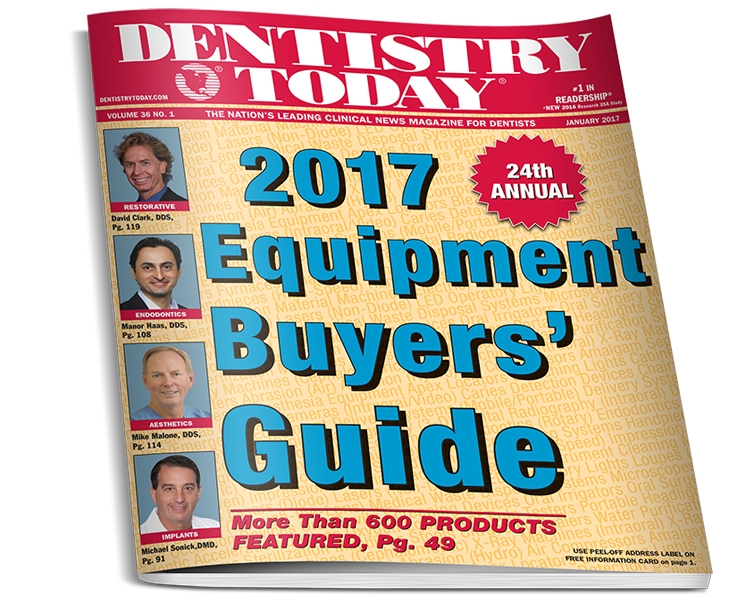
The end of the year brought us another opportunity to reflect on the many learning experiences, challenges, and successes of 2016. Even more importantly, we can now look forward to another year of creating and achieving our highest personal and professional goals. Most of us, if lucky enough to be have had a holiday breather with friends and family, come out on the other side renewed in spirit. I must confess that I am carrying a big dose of optimism into 2017! And, having joined together with the Dentistry Today editorial, production, and sales teams to assemble what is now my 10th January issue as editor-in-chief (35th anniversary for Dentistry Today!), we are ready to take on 2017 with renewed energy and enthusiasm, not only in our work for this top clinical news magazine, but also for our noble profession. As a profession, let’s combine the best of all that we have learned in the past and the present and dedicate our collective future to all the positive personal and professional growth that we can imagine.
This month, we have an excellent lineup of articles written by dedicated and optimistic clinical authors: Dr. David Clark shares solutions to some of the challenges faced when placing Class II Composite resin restorations; Dr. Manor Haas presents a number of questions and criteria to consider before root canal treatment; Dr. Dino Javaheri presents a simplified chairside technique for provisionals and impressions; Dr. Gary Kaye shares part 2 of a 3-part series on restorative digital dentistry; Drs. Gregori Kurtzman and Tarun Agarwal make a case for the increased use of the diode laser to maximize impressions and restorative accuracy; Dr. Mike Malone talks about the importance of material choice in achieving predictable outcomes; Drs. Todd Schoenbaum and Chandur Wadhwani discuss screw-retained versus cement-retained restorative options in the aesthetic zone; and Dr. Michael Sonick et al outline protocols for implant placement in the aesthetic zone. In a candid Viewpoint article, Dr. Michael Davis opines on potential contract risks for doctors who are, or might be soon, involved in corporate dentistry. In our formally peer-reviewed selection, available for 2 FAGD/MAGD CEUs, Dr. John Hardeman discusses antihypertensive medications, mechanisms of action, and the management of the hypertensive dental patient.
With warm and optimistic wishes, please enjoy this of Dentistry Today!
Related Articles
Anti-Aging Movement Drives Aesthetic Care



